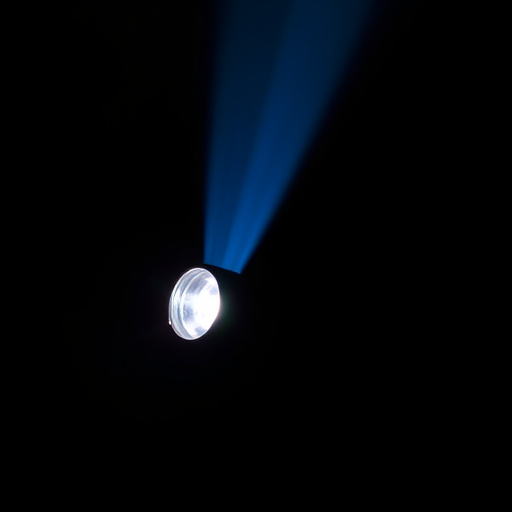When hiking remote trails, choose flashlights for hiking and backpacking with durable design, waterproof rating, robust batteries, and adjustable LED brightness settings. Prioritize safety by securing the flashlight, adjusting beam width based on conditions, and using red light to preserve night vision. Consider solar-powered or hybrid models for versatility and sustainability.
“Illuminating your path in remote hiking adventures is crucial. The right emergency light, specifically flashlights designed for rugged outdoor use, can be a game-changer. This comprehensive guide explores choosing reliable flashlights for challenging trails, understanding the vital lighting needs of hiking, and navigating key features like waterproof designs, power sources, beam patterns, weight, and LED brightness levels. Discover essential safety tips for maximizing your flashlight’s potential during backpacking trips.”
- Choosing Reliable Flashlights for Remote Trails
- Understanding Hiking's Critical Lighting Needs
- Waterproof and Durable Design Considerations
- Power Sources: Batteries or Solar Charging?
- Beam Patterns and Their Practical Uses
- Weight and Comfort for Long Treks
- Additional Features: LED Brightness Levels
- Safety Tips for Using Flashlights During Hikes
Choosing Reliable Flashlights for Remote Trails
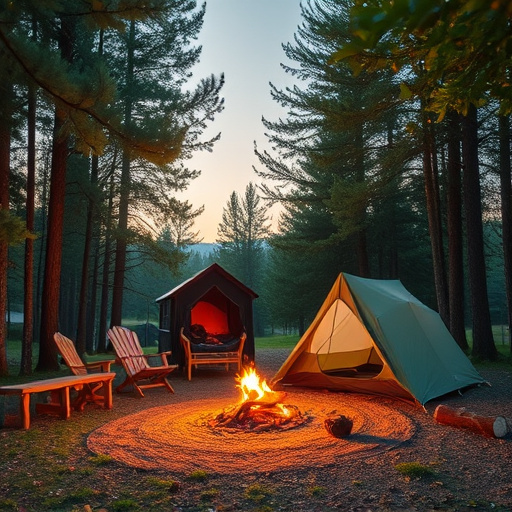
When venturing onto remote hiking trails, relying on traditional flashlights for navigation and safety can be risky. These areas often lack reliable power sources, making it crucial to select flashlights designed specifically for rugged outdoor conditions. Look for flashlights for hiking and backpacking that are durable, waterproof, and equipped with robust batteries capable of enduring extended use in demanding environments.
Consider models featuring bright LED lights with adjustable beams, allowing you to signal for help or navigate narrow paths effectively. Additionally, ensure the flashlight has a built-in charging system, such as solar panels or portable power banks, to avoid depleting your power during long treks. Invest in a reliable source of light that can withstand the elements and provide the necessary illumination for safe hiking adventures far from civilization.
Understanding Hiking's Critical Lighting Needs
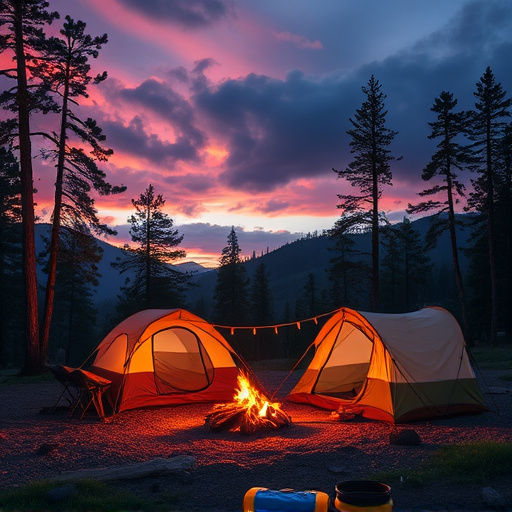
Remote hiking presents unique challenges, especially when it comes to lighting. Unlike urban environments with reliable power sources and streetlights, hikers often find themselves in dark, unmarked trails where visibility can be life-or-death. This is where flashlights for hiking and backpacking become essential gear. They not only illuminate the path ahead but also help navigate through dense forests or rocky terrain after dusk.
Understanding the critical lighting needs of remote hiking involves recognizing the diverse conditions hikers may encounter. From sudden cloud cover that can abruptly dim sunlight to unexpected detours that extend daylight hours, a reliable flashlight ensures safety and enjoyment. The right choice is a durable, waterproof flashlight with adjustable brightness settings, offering both a focused beam for close-up navigation and a wider light for illuminating larger areas.
Waterproof and Durable Design Considerations

When choosing flashlights for hiking and backpacking, a waterproof and durable design is paramount. Remote hiking often exposes gear to unpredictable weather conditions, from pouring rain to freezing temperatures. A robust build ensures your light remains functional in adverse environments, enhancing safety during low-visibility trails. Look for materials like aircraft-grade aluminum alloys that offer corrosion resistance and a secure grip, even when wet.
Furthermore, consider design elements that promote durability. Sealed, waterproof switches prevent electrical failure from moisture ingress, while impact-resistant lenses safeguard against cracks or shatters during rough handling or accidental falls. These features contribute to the longevity of your hiking flashlight, ensuring it performs reliably throughout your outdoor adventures.
Power Sources: Batteries or Solar Charging?
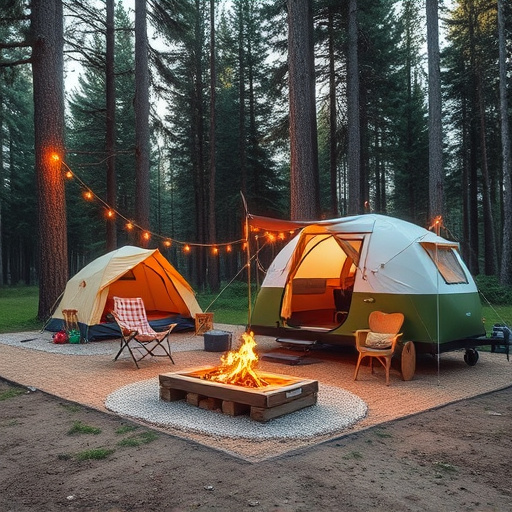
When it comes to power sources for flashlights designed for hiking and backpacking, a fundamental choice lies between batteries and solar charging. Batteries offer immediate and reliable illumination, ensuring you’re always prepared for low-light conditions during remote treks. However, they require regular replacement, especially in prolonged expeditions where frequent recharging isn’t feasible.
On the other hand, solar-powered flashlights harness the energy from sunlight, which is abundant in outdoor settings. These devices are eco-friendly and cost-effective in the long run. Yet, their performance depends on sun exposure; they may not be as effective during cloudy or nocturnal conditions. For hikers and backpackers seeking versatility, a hybrid approach combining both batteries for backup and solar charging for sustainability could be the ideal solution.
Beam Patterns and Their Practical Uses
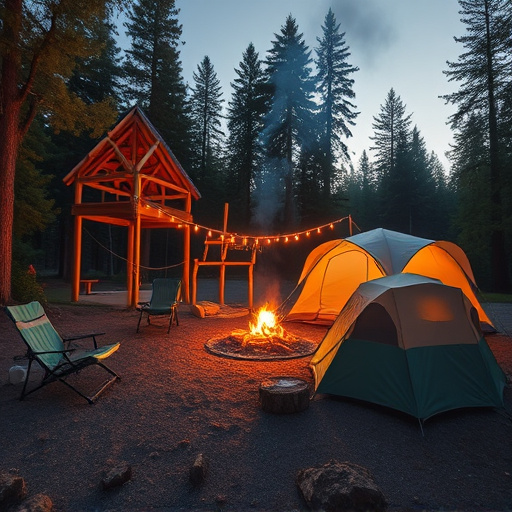
When it comes to remote hiking, choosing the right emergency light is paramount for safety. Beam patterns play a crucial role in determining the effectiveness of these lights. For instance, a focused beam can illuminate long distances, making it ideal for navigating dense forests or desolate trails at night. This concentrated light allows hikers to spot potential hazards or landmarks from afar, ensuring they stay on course during emergencies.
On the other hand, wider beam patterns are more suitable for close-range tasks like setting up camp or reading a map in low-light conditions. Flashlights designed for hiking and backpacking often offer adjustable beam settings, catering to these diverse needs. This versatility ensures that hikers can tackle various situations, from exploring cavernous caves to simply finding their way back to the trailhead, with a reliable emergency light source.
Weight and Comfort for Long Treks
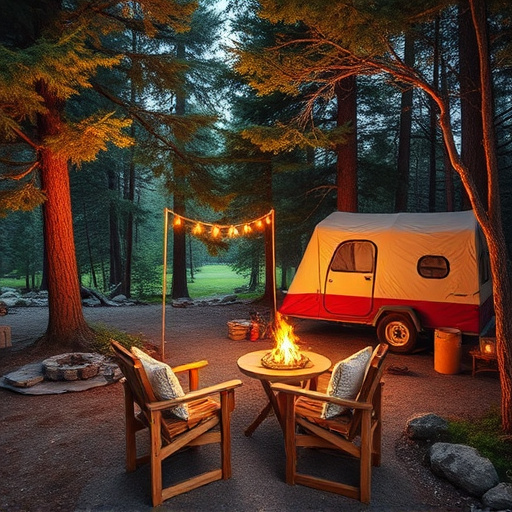
When packing for a remote hiking trip, every gram counts, especially when considering essentials like emergency lighting. Flashlights designed specifically for hiking and backpacking prioritize lightweight construction without sacrificing durability. These compact flashlights often use efficient LED bulbs that consume less power, extending battery life significantly—crucial for multi-day treks where access to power sources is limited. Comfortable grip designs and adjustable beams ensure clear visibility during sudden stops or treacherous climbs, making them reliable companions on even the longest journeys through remote landscapes.
Additional Features: LED Brightness Levels

When choosing a flashlight for remote hiking and backpacking, consider the LED brightness levels on offer. High-quality flashlights for hiking often feature adjustable brightness settings, allowing you to conserve battery life during your expedition. This is especially crucial when navigating through dense forests or setting up camp after dark. The ability to switch between various LED brightness levels ensures optimal visibility without unnecessary power drain, making it a must-have feature for any serious adventurer.
Additionally, some models offer dynamic lighting modes that automatically adjust brightness based on surrounding conditions. These intelligent features ensure you have the perfect balance of light and battery efficiency, enhancing your safety and enjoyment during remote hikes. Whether you’re exploring caves, setting up camp in backcountry terrains, or simply navigating through unfamiliar trails, the right flashlight with adjustable LED brightness levels can significantly improve your overall experience.
Safety Tips for Using Flashlights During Hikes
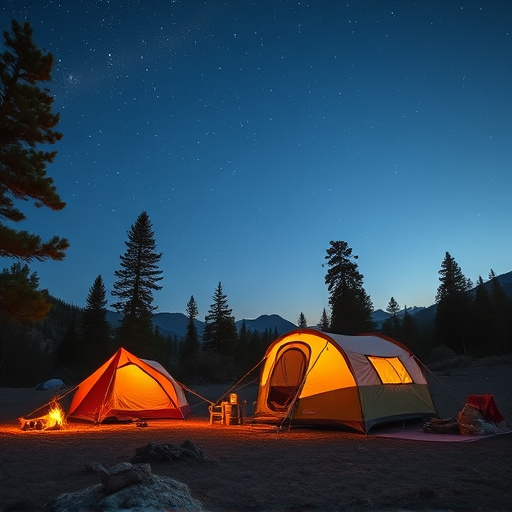
When using flashlights for hiking and backpacking, safety should always be your top priority. Before embarking on any remote hike, ensure your flashlight is in full working condition with fresh batteries or a reliable power source. Check that the beam is adjustable to suit different conditions—a narrow beam for long-range visibility and a wide beam for closer illumination. Always keep it secured to avoid accidental drops during challenging terrain.
Remember, proper use of flashlights during hikes involves being mindful of your surroundings. Avoid blinding others with your flashlight at night or during dusk when wildlife is most active. Use the red light setting to preserve your night vision and conserve battery life. Stay on marked trails and follow established guidelines for lighting up areas that might be home to nocturnal creatures.
When selecting a flashlight for remote hiking and backpacking, consider its reliability, lighting needs, durability, power source, beam pattern, weight, brightness, and safety features. By understanding these aspects, you can choose a robust and versatile light to navigate safely through the darkest trails. Always remember to pack extra batteries or invest in solar-powered options, ensuring your flashlight remains operational when you need it most. Stay safe out there!
